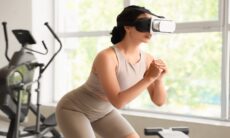Digital Murals Transform Iowa’s Art Scene
Augmented reality is reshaping the way art is experienced in central Iowa, merging physical creativity with digital innovation. Visitors exploring downtown Des Moines or attending the Iowa State Fair may have already engaged with this technology, often without realising it. By simply pointing a smartphone camera at a mural or public artwork, passers-by can witness static images turning into dynamic, animated scenes.
This technology, known as augmented reality (AR), overlays digital images, text or graphics onto real-world environments. Unlike virtual reality, which immerses users in a fully digital world, AR enhances what is already present, building a bridge between the physical and virtual. Well-known examples include the mobile phenomenon Pokémon Go and popular filters on social media platforms like Snapchat and Instagram. However, beyond entertainment, AR is now finding its place in the world of public art.
A notable example of this integration can be found on the west side of the parking garage at 901 Grand Avenue in Des Moines. A newly unveiled mural titled Nature’s Algorithm has become a focal point for this evolving art movement. This beautiful art was created by Dutch artist Leon Keer, who collaborated with the Greater Des Moines Public Art Foundation and Principal Financial Group, the piece transforms through the lens of a smartphone. When viewed via the foundation’s dedicated app, the mural depicts a stack of vintage televisions that come alive with motion, playing vivid scenes from across Iowa, a visual tapestry connecting nature, culture, and technology.
The project represents more than a fusion of art and technology; it signals the beginning of a larger initiative aimed at modernising public engagement with local art. The Greater Des Moines Public Art Foundation envisions this installation as the first in a series of augmented reality-compatible murals across the city. By embedding interactivity into traditional art forms, the foundation aims to attract a broader and younger audience, encouraging participation and curiosity in an age dominated by digital screens.
The mural will remain on display for six years, allowing residents and visitors alike to engage repeatedly with its evolving meaning. Its interactive nature ensures that each viewing offers a fresh perspective, blending timeless artistic expression with the ever-changing possibilities of technology. Through such innovation, Des Moines positions itself as a regional leader in public art experimentation, demonstrating how digital tools can invigorate community spaces and enhance cultural appreciation.
The success of Nature’s Algorithm is expected to inspire more artists in Iowa to explore the intersection of art and augmented reality. The foundation anticipates that the mural will serve as a catalyst for creative collaborations, fostering a community of digital and traditional artists eager to push the boundaries of visual storytelling. As more installations emerge, the initiative could transform Des Moines into a living gallery, one that evolves with every passerby, every lens, and every interaction.
In essence, this initiative redefines how people encounter art in everyday life. It moves beyond passive observation, inviting active engagement through simple gestures, a phone raised, an image captured, a moment transformed. With projects like Nature’s Algorithm, central Iowa’s artistic landscape is not only becoming more visually engaging but also more inclusive, modern, and connected to the digital age.









